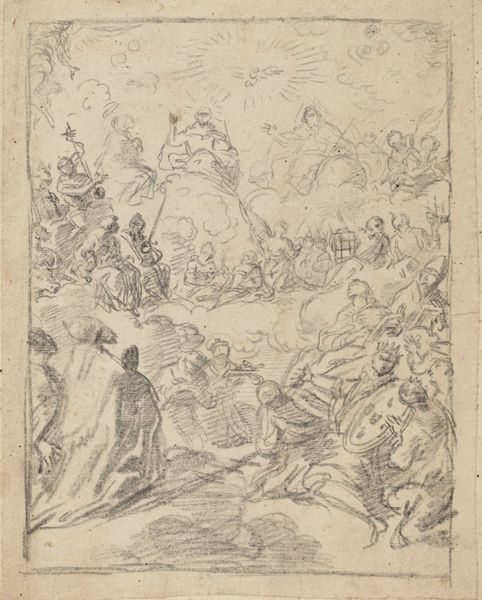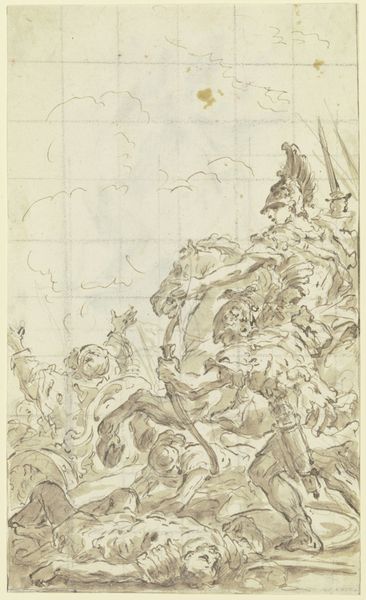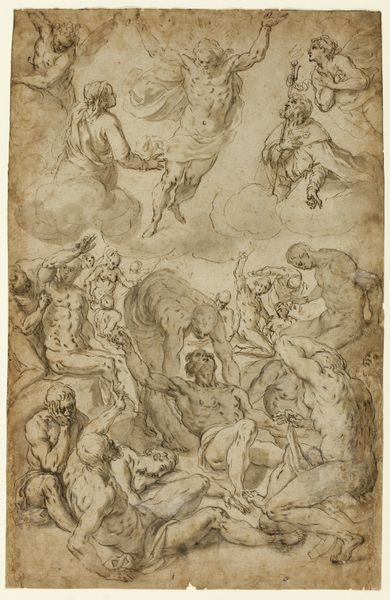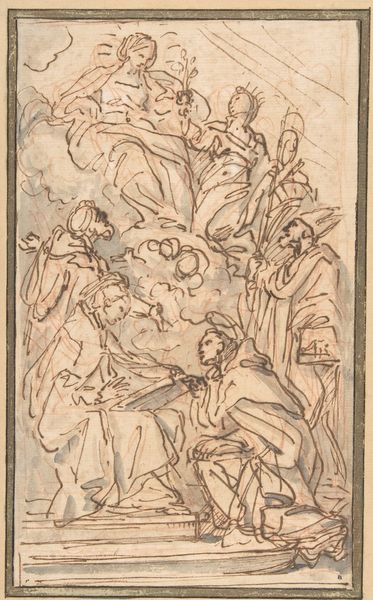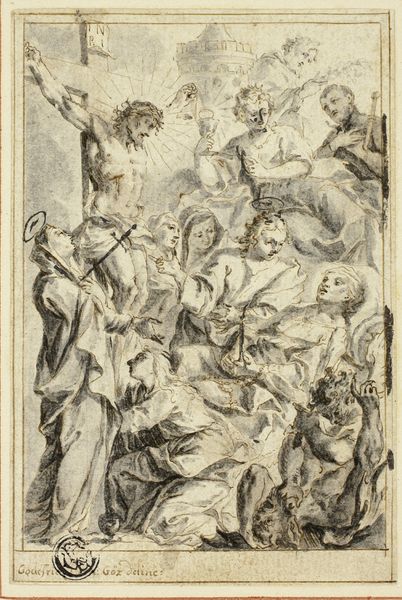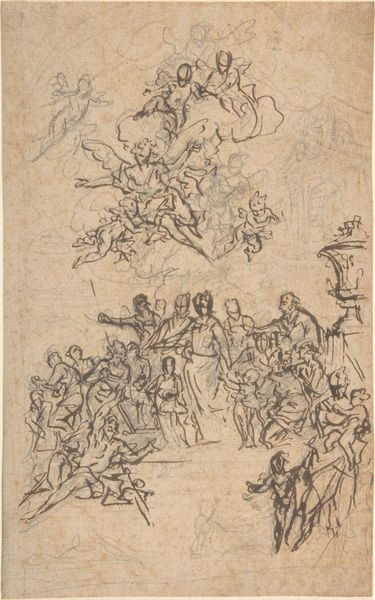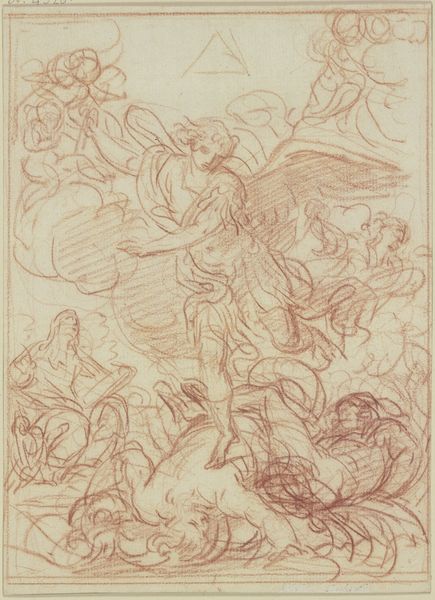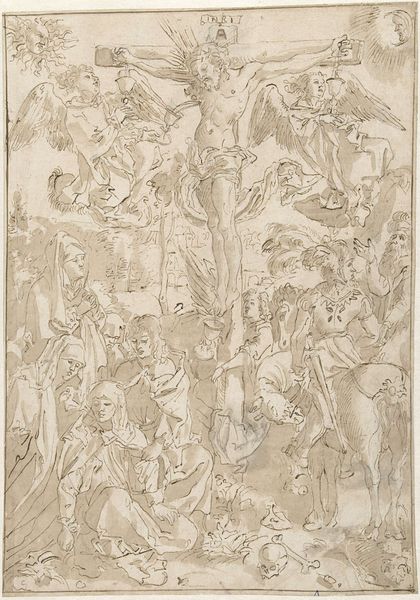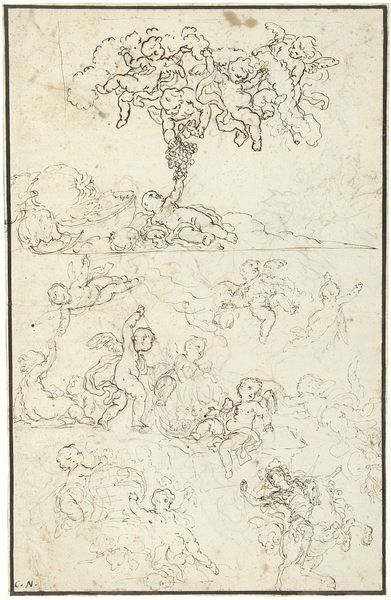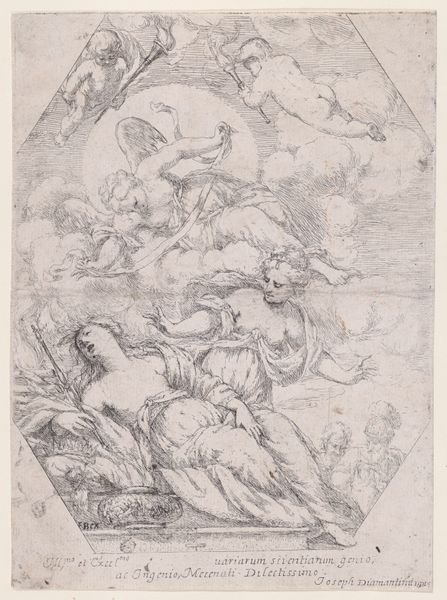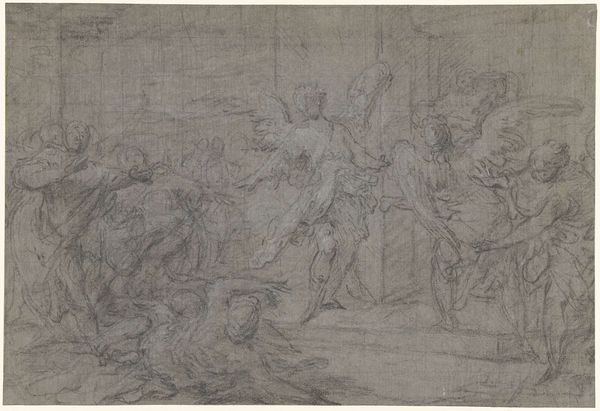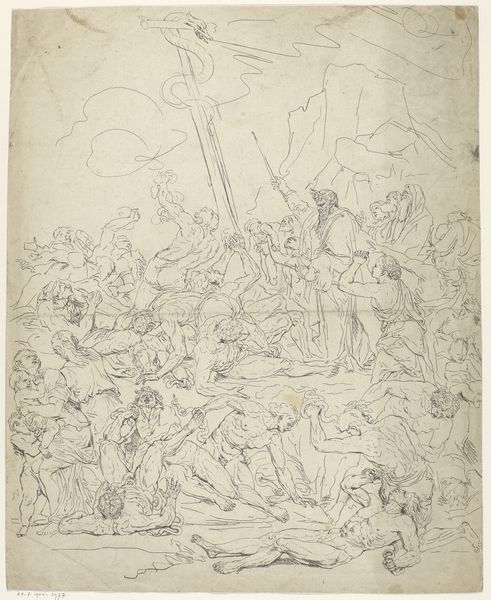
Ontwerp voor een plafondschildering met Christus in de hemel tussen heiligen 1649 - 1709
0:00
0:00
giovannibattistagaulli
Rijksmuseum
drawing, ink
#
drawing
#
baroque
#
pen drawing
#
figuration
#
ink
#
line
#
history-painting
Dimensions: height 272 mm, width 160 mm
Copyright: Rijks Museum: Open Domain
Curator: My first impression is of pure, ecstatic chaos, like looking into the sun or witnessing a hurricane. So much movement crammed into a tiny space. Editor: Indeed. What we’re seeing is “Design for a ceiling painting with Christ in Heaven among Saints,” a drawing in pen and brown ink by Giovanni Battista Gaulli, sometime between 1649 and 1709. The piece resides here at the Rijksmuseum. Curator: Ah, so this frenzy is meant to be heaven? Interesting. You know, there's a beautiful freedom in his lines, even if it does feel like he was chasing his tail a bit trying to get it all down on paper. Editor: Gaulli was a key figure in the Roman Baroque. Artists of his time grappled with creating a persuasive, overwhelming sense of the divine, directly tied to Counter-Reformation theology. They were designing what amounted to stage sets for religious experiences. Curator: Stage sets, yes! That's exactly it! There's a theatrical drama, a sort of baroque exuberance I detect, everything angled to pull you up and into it. The lines create such powerful diagonal movement. Editor: Consider that Gaulli often designed illusionistic ceiling frescoes, spectacular visions meant to dissolve the architecture of the church. This sketch seems an early study for such a work. Curator: You can feel that ambition here, the intention of making something not just seen, but felt. Looking closely, there's real skill here. I would feel intimidated painting on this scale, high above on scaffolding! Editor: He’s mapping out not just the composition but the very experience. The Baroque masters were selling salvation wholesale. They understood the psychology of devotion on a grand scale. Curator: Ultimately, regardless of the theological and historical context, it is that pure energetic impulse of the drawing, all these swirling bodies and gestures pushing and pulling. Very inspiring, actually. Editor: I’d agree. Examining Gaulli’s initial vision allows us to better grasp the mechanics of awe and persuasion at play. I do think we tend to forget just how deeply embedded political intentions were within artwork of this era.
Comments
No comments
Be the first to comment and join the conversation on the ultimate creative platform.
